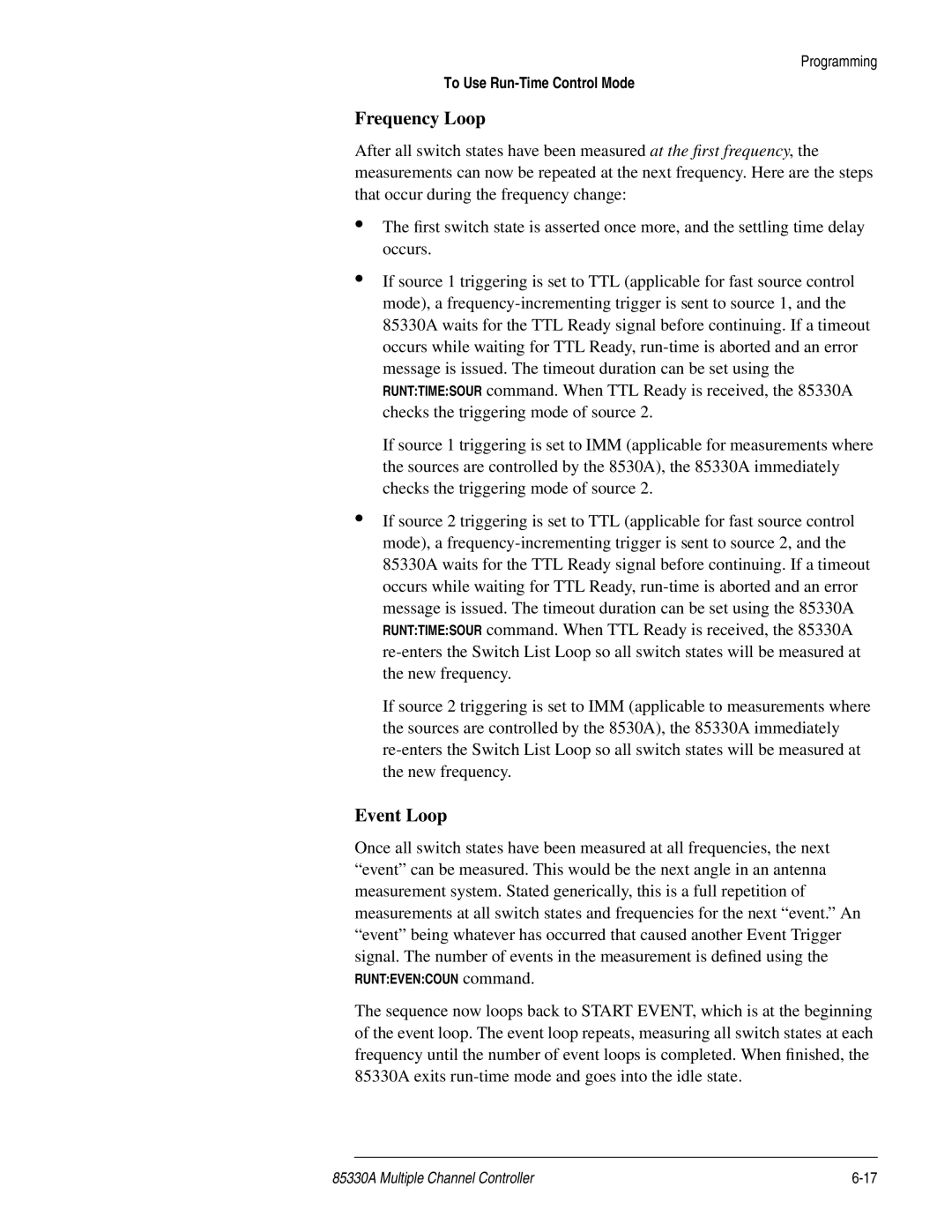Programming
To Use
Frequency Loop
After all switch states have been measured at the first frequency, the measurements can now be repeated at the next frequency. Here are the steps that occur during the frequency change:
•The first switch state is asserted once more, and the settling time delay occurs.
•If source 1 triggering is set to TTL (applicable for fast source control mode), a
If source 1 triggering is set to IMM (applicable for measurements where the sources are controlled by the 8530A), the 85330A immediately checks the triggering mode of source 2.
•If source 2 triggering is set to TTL (applicable for fast source control mode), a
If source 2 triggering is set to IMM (applicable to measurements where the sources are controlled by the 8530A), the 85330A immediately
Event Loop
Once all switch states have been measured at all frequencies, the next “event” can be measured. This would be the next angle in an antenna measurement system. Stated generically, this is a full repetition of measurements at all switch states and frequencies for the next “event.” An “event” being whatever has occurred that caused another Event Trigger signal. The number of events in the measurement is defined using the RUNT:EVEN:COUN command.
The sequence now loops back to START EVENT, which is at the beginning of the event loop. The event loop repeats, measuring all switch states at each frequency until the number of event loops is completed. When finished, the 85330A exits
85330A Multiple Channel Controller |
